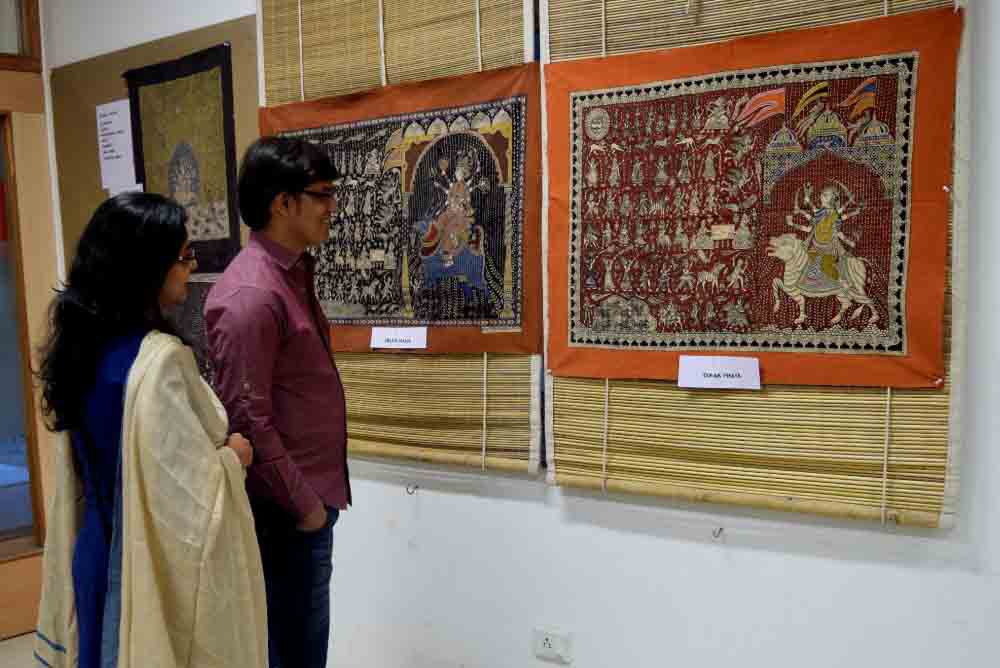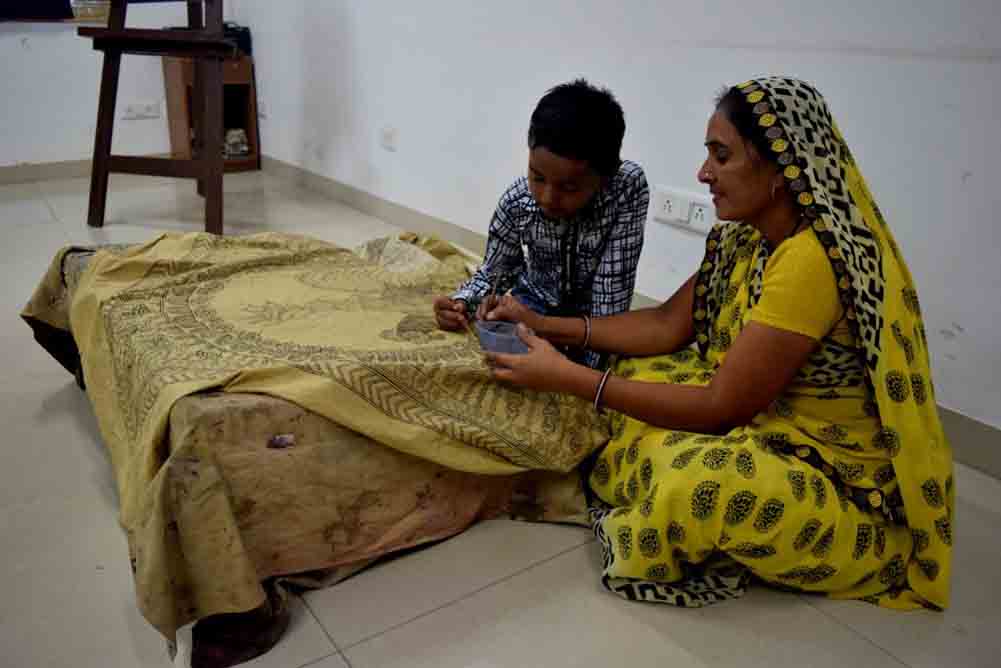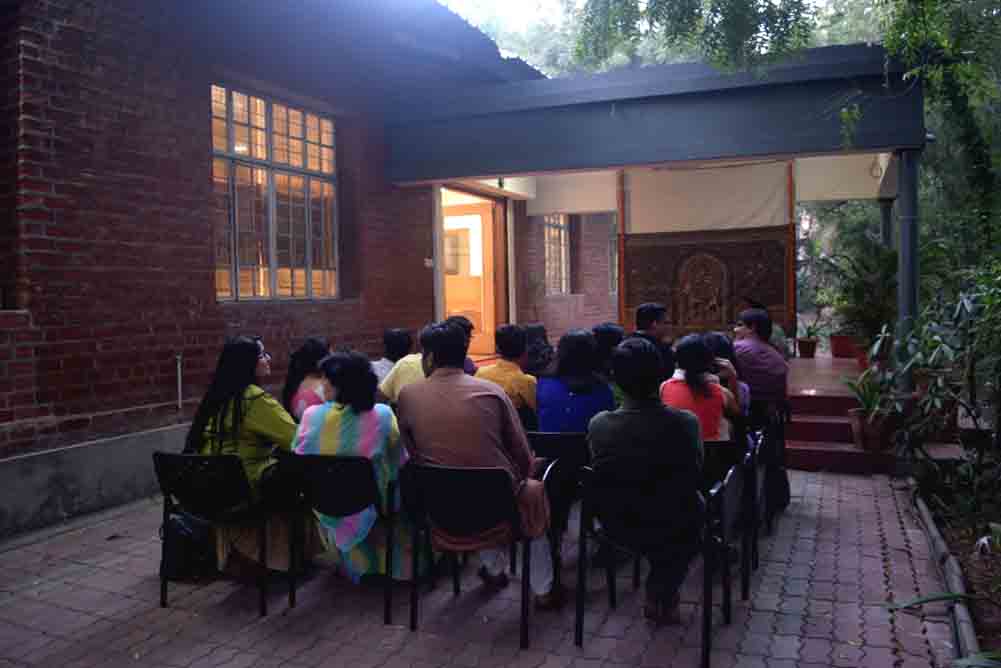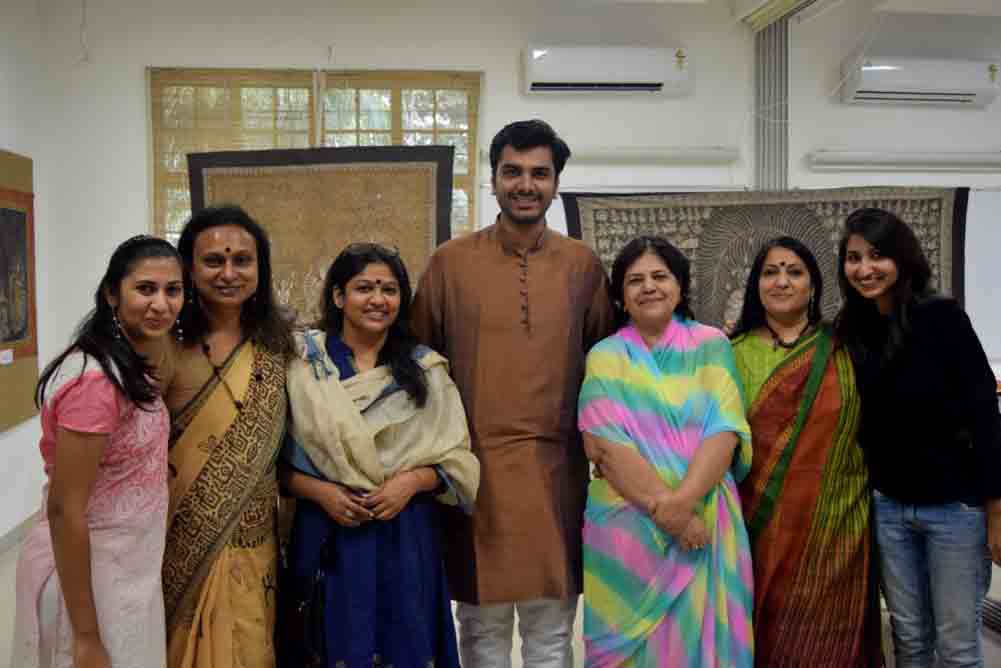Kala Katha: Legends on Cloth ( Mata ni Pachhedi)
Centre for Heritage Management, Ahmedabad University hosted a unique experiential exhibition on November 19, 2016, on the traditional art of Gujarat, ‘Mata ni Pachedi’. The exhibition was held on the first day of the ‘World Heritage Week’ and was part of a student initiative. This majestic exhibition experience transmogrified classroom into a gallery for a day.
The exhibition’s aim is to allow the public to experience the dynamics of community ownership for the craft forms and processes, as together it creates the living heritage of the art form.
The unique exhibition had different Mata ni Pachedis on display. Artisan Chandrakant Chilara, whose works were on display, also spent his day along with his family, while giving a live demonstration of the process of making Mata ni Pachedi art piece during the exhibition. The extravaganza also displayed different natural mediums used in making this magnanimous Pachedi.
Exquisite Pachedis depicting different Matas (goddesses) like Bhauchar Mata, Meldy Mata, Visat Mata, Durga Mata were gracing the classroom walls with their presence. The artist usually utilizes natural colors and pigments to make intricate artworks which are then heartily worshiped by the devotees.
Mata ni Pachedi is a living traditional art form of the ‘Vaghari’ community of Gujarat. The community is flourishing this 300-year-old art form since generations as it has a unique aspect of a movable shrine of the mother goddess. Geographically the community of ‘Devipujaks’ mostly live in Ahmedabad, Surendranagar, and Kheda districts of Gujarat and prefers dwelling along river banks as the flowing water and large spaces like riverbeds are important for the process of creating a Pachedi.
The ‘Mata ni Pachedi is worshiped by the whole community, but there are 3 important role players in the devotional course, which are:
Chitara: Artisans who paint or performs the block printing on the Pachedi
Bhuva: Performers who conduct rituals with the backdrop of the Pachedi
Jagariya: Singers who sing melodious narratives and tell stories of the Mata
In this exhibition, one could meet and experience the work of the Chitara and Jagariya.
In this art form the ‘Mata’ or the goddess is depicted in different forms and her stories are painted or block printed on the fabric. The fabrics are then hung on walls and the community assembles around them to worship the Mata.
An innovative aspect of the exhibition was a ritual music performance by the ‘jagariyas’; the Jagariyas sing narratives and tell stories and religious episodes from the epics. of Mata in front of the Pachedi, particularly to please the Mata. This gives one a sense of the art form as a living entity, and not just something to be adored visually.
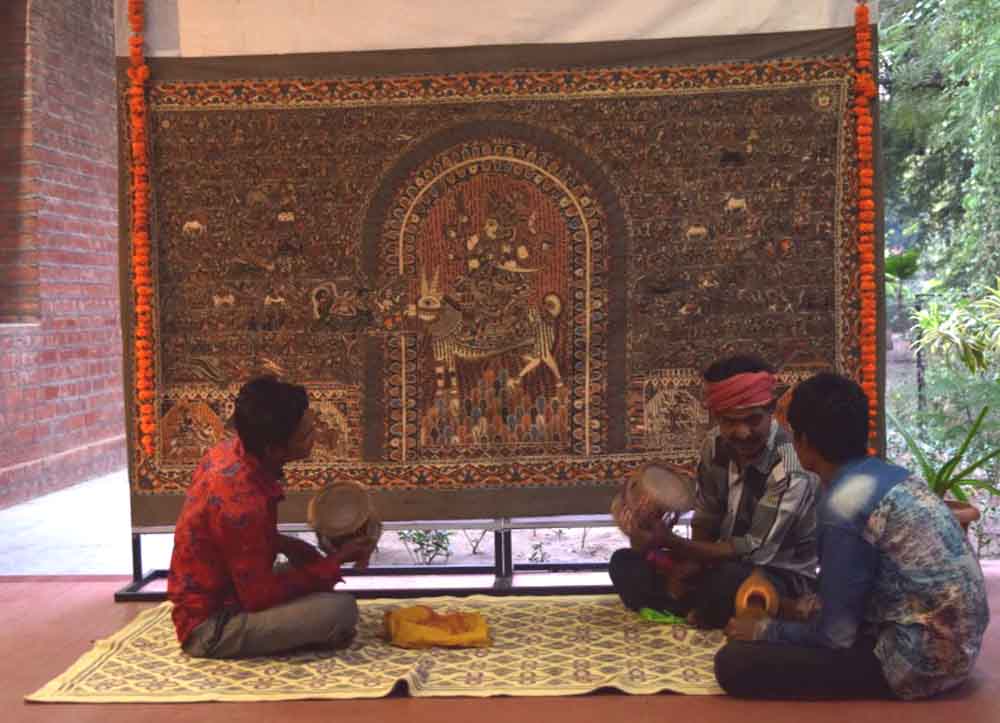
Traditionally the textile is a rectangular piece of white cotton cloth which is painted/printed in maroon and black colors.
We spoke to the artisan Chandrakant Chitara who mentioned that he has been a practitioner of this heirloom since he was 10 years old, and now he can proudly exclaim to have 35 years of experience of this art.
During his talk he mentions about the changing trends over the years, like earlier it was only 2 color palettes consisting maroon and black shades but with the changing market expectations, the aesthetics have increased up to 7-8 colors. While earlier this was used only for ritualistic purpose currently different products and merchandise are using these techniques and motifs. People even buy the Pachedis now to decorate their houses. This trend has led to an increase in the emphasis on beauty, detailing and variance as compared to earlier.
Chandrakant mentioned that he is happy working on this art form, but the lack of facilities and space creates constraints for every artisan. The whole conversation turned really intimate when he shared a personal experience of his children taking interest towards learning this art form and continue till generations.
The whole setup was organized by students of the Masters Programme at CHM. The event was graced by the presence of Niharika Shah, Gallery Director at Kanoria Centre for the Arts, Chirashree Thakkar, a practicing architect, Barsha Dutta Bhojani, a fashion designer and Param Pandya.
We at CY feel that holding this exhibition was really an intellectual initiative by the students. This gave everyone a great opportunity to not only realize city’s own craft form but also opened a window to interact with the creator and get a glimpse of the actual ritual behind worshipping it.
We all heartily look forward to seeing more such innovative events in future.
Photographs : Shailaja Parashar
Yatra Archives

 How Tulika Books is creating impact in children’s lives through picture books
Nandini Varma
How Tulika Books is creating impact in children’s lives through picture books
Nandini VarmaAug 21, 2019
A children’s book about a boy who feels like a girl. And about a child brought up by grandfathers. These are some of the stories published by Tulika Books, who have been making children’s picture books since 23 years. Little…
 Dalgona Coffee: A worldwide social media trend about home-made café experience
Harshil Shah
Dalgona Coffee: A worldwide social media trend about home-made café experience
Harshil ShahApr 2, 2020
While the lockdown has ignited various trends on social media, one that has received a major global following is #DalgonaCoffee. With thousands of posts on its name, here’s all you need to know about the Dalgona Coffee wave. I first…
 Leonardo, Michelangelo, Raphael and Donatello—Artists or Teenage Mutant Ninja Turtles characters?
Harshil Shah
Leonardo, Michelangelo, Raphael and Donatello—Artists or Teenage Mutant Ninja Turtles characters?
Harshil ShahNov 5, 2019
Did you ever wonder where the Teenage Mutant Ninja Turtles’ characters got their names from? Well, your search is complete. Here is a brief introduction of the artists from whom the creators of TMNT took inspiration. Teenage mutant ninja turtles,…
 The call of the mountains: orthopaedic Dr Yatin Desai’s advice on trekking
Himanshu Nainani
The call of the mountains: orthopaedic Dr Yatin Desai’s advice on trekking
Himanshu NainaniMay 24, 2019
In this piece 64 year old Dr Yatin Desai, shares with CY his inspiring story of how to scale towering mountains with utmost ease and how this life adventure activity can shape human character and health. Chances are high that…


